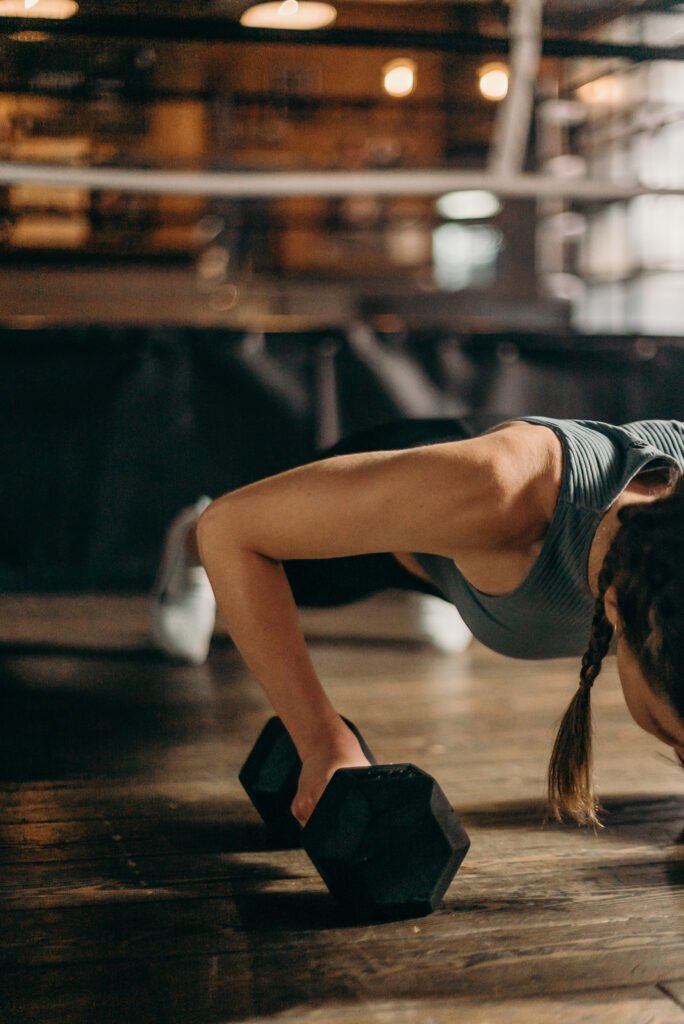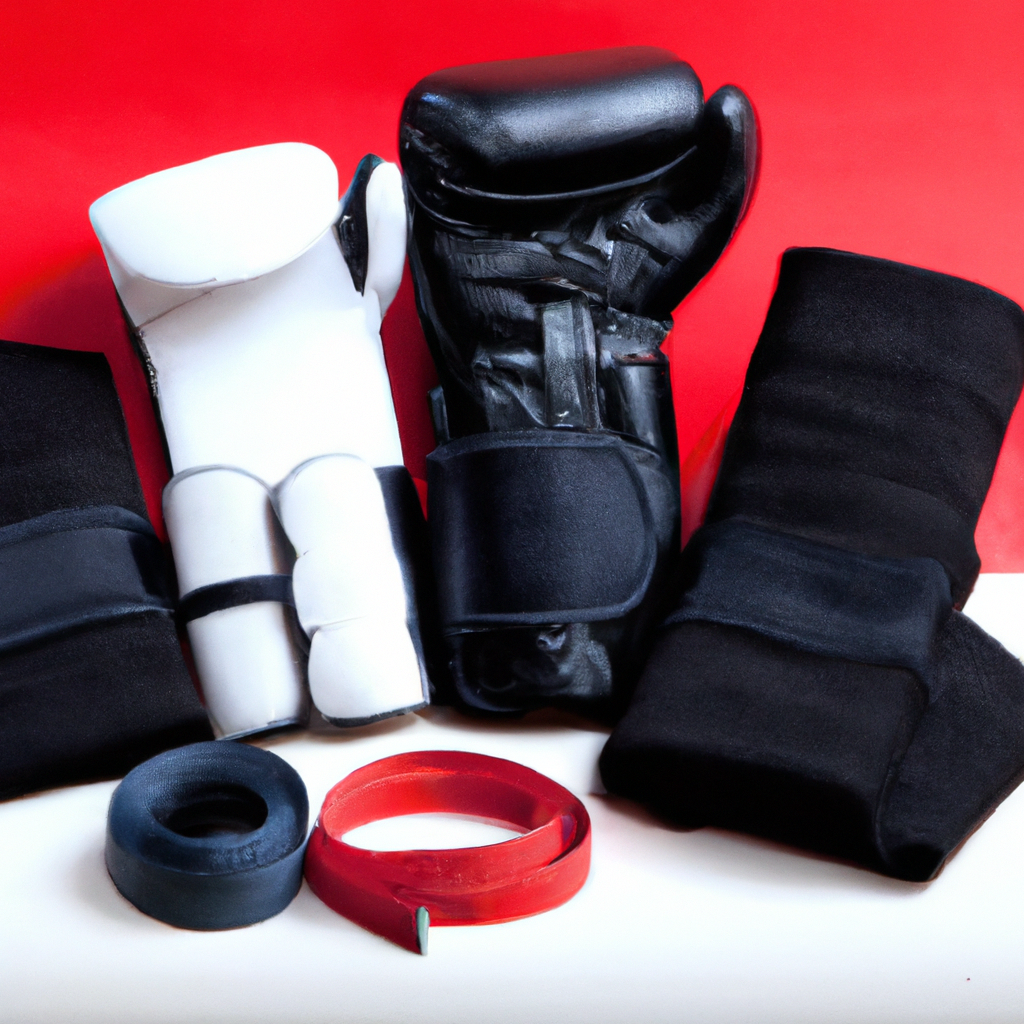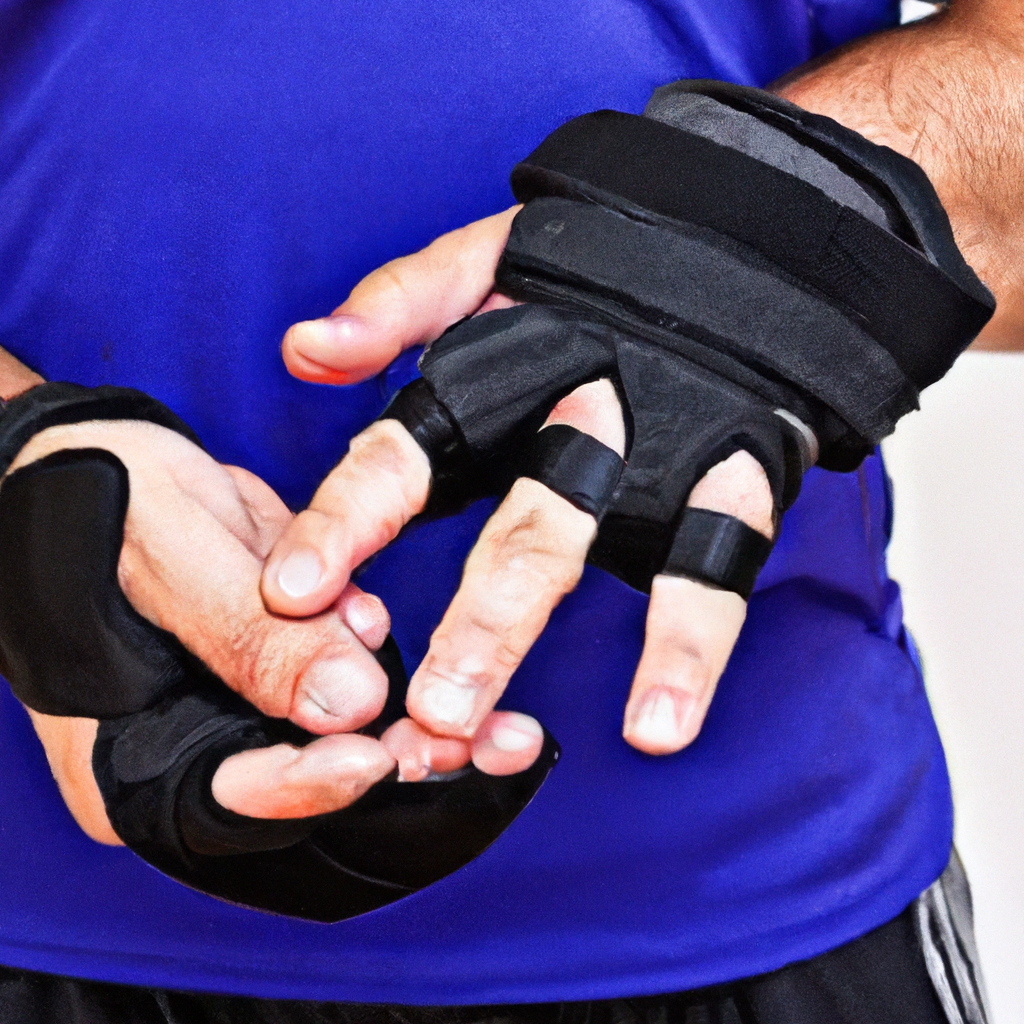If you’re a weightlifter looking for some extra support and protection, then gloves and wrist wraps might just be your new best friends. These accessories are designed to enhance your lifting experience by providing added stability and grip. Gloves offer a layer of protection for your hands, preventing calluses and blisters, while wrist wraps help to stabilize your wrists, reducing the risk of injury. Whether you’re a beginner or a seasoned lifter, investing in gloves and wrist wraps can make a significant difference in your workout routine. So, let’s take a closer look at how these accessories can help you achieve your lifting goals.
Benefits of Using Gloves and Wrist Wraps
Protection
Using gloves and wrist wraps during your workouts can provide added protection to your hands, wrists, and fingers. Whether you’re lifting heavy weights or performing bodyweight exercises, these accessories act as a barrier between your skin and the equipment, preventing blisters, calluses, and abrasions.
Improved Grip
One of the key benefits of using gloves and wrist wraps is improved grip. These accessories are designed to enhance your hand’s ability to grasp and hold onto weights or equipment. The gloves usually come with grip pads or textured surfaces that increase friction, allowing you to maintain a secure hold on the weights without slipping. Wrist wraps provide stability to your wrists, aiding in maintaining a firm grip on bars or handles.
Reduced Risk of Injuries
By providing protection and improved grip, gloves and wrist wraps contribute to reducing the risk of injuries. When your hands are properly cushioned and supported, the chances of accidents, such as dropping weights or losing control of equipment, are significantly decreased. Additionally, wrist wraps help stabilize your wrists during heavy lifts, minimizing the risk of sprains and strains.
Support and Stability
Gloves and wrist wraps offer valuable support and stability during workouts. The gloves have built-in wrist straps or wraps that secure your wrists in place, helping to prevent excessive bending or abnormal movement that could lead to injuries. Wrist wraps, on the other hand, reinforce the strength of your wrists, providing stability and improving your overall performance during weightlifting exercises.
Choosing the Right Gloves
Material
When selecting gloves, it’s important to consider the material they are made of. Different materials offer various levels of durability, breathability, and comfort. Common materials used in gloves include leather, synthetic leather, neoprene, and mesh. Leather gloves are known for their durability, while synthetic leather and mesh gloves offer breathability and flexibility. Neoprene gloves provide excellent cushioning and protection.
Fit
The fit of your gloves is crucial for comfort and effectiveness. Gloves that are too tight can restrict blood flow and movement, while gloves that are too loose can cause discomfort and may hinder your grip. It’s essential to choose gloves that fit snugly but allow for natural hand movements. Consider trying on different sizes and styles to find the perfect fit for your hand shape and size.
Finger Length
The length of the glove’s fingers should also be taken into account. Gloves that are too short can leave your fingertips exposed, increasing the risk of calluses and blisters. On the other hand, gloves that are too long can interfere with your dexterity and make it difficult to grasp weights and equipment properly. Opt for gloves that provide adequate coverage and ensure that your fingertips are protected.
Padding and Grip
Pay attention to the padding and grip features of the gloves. Look for gloves with sufficient padding in the palm area to cushion your hands during heavy lifting. The padding should be thick enough to offer protection but not so thick that it compromises your grip. Additionally, gloves with textured surfaces or grip pads enhance your grip, preventing weights from slipping out of your hands.

Types of Wrist Wraps
Elastic Wrist Wraps
Elastic wrist wraps are popular among weightlifters and fitness enthusiasts due to their flexibility and adjustable support. These wraps are typically made of elastic or woven fabric that provides a snug fit around the wrist. They offer varying degrees of support and can be adjusted according to your personal preferences. Elastic wrist wraps are easy to use and suitable for various exercises.
Velcro Wrist Wraps
Velcro wrist wraps are known for their convenience and ease of use. These wraps feature a Velcro closure system that allows for quick and effortless adjustments. Velcro wrist wraps provide excellent support and stability to the wrists, making them ideal for heavy weightlifting exercises. They are durable and reliable, ensuring that your wrists are protected during intense workouts.
Thumb Loop Wrist Wraps
Thumb loop wrist wraps are designed with an added loop for your thumb. This feature helps secure the wrap in place and prevents it from sliding or unwrapping during exercises. Thumb loop wrist wraps provide extra support and stability to the wrists, reducing the risk of injuries. They are commonly used by powerlifters and individuals who perform exercises that require a strong grip.
Usage Tips for Gloves and Wrist Wraps
Proper Sizing
To ensure maximum comfort and effectiveness, it is essential to choose the right size for your gloves and wrist wraps. Check the manufacturer’s sizing chart and measure your hands and wrists accordingly. Follow the instructions provided to find the appropriate size that will fit snugly without being too tight or too loose. Properly sized accessories will optimize your performance and reduce the risk of discomfort or injuries.
Regular Cleaning
Gloves and wrist wraps can accumulate sweat, dirt, and bacteria over time. To maintain hygiene and prolong their lifespan, it is important to clean them regularly. Check the care instructions provided by the manufacturer to determine the appropriate cleaning method for your accessories. In general, most gloves and wrist wraps can be hand washed with mild soap and air-dried. Avoid using harsh chemicals or machine washing, as they may damage the materials.
Correct Wrapping Technique
When using wrist wraps, it is crucial to wrap them correctly to ensure proper support and stability. Start by wrapping the wrist wraps around your wrists, positioning them just below the palm area. Then, wrap the fabric tightly but not excessively, making sure to maintain flexibility and blood circulation. Secure the wraps with the Velcro or tuck the end of the wrap under itself. Adjust the tightness as needed, ensuring a comfortable yet supportive fit.

When to Use Gloves and Wrist Wraps
Heavy Weightlifting
Gloves and wrist wraps are particularly beneficial during heavy weightlifting sessions. The added protection, improved grip, and support provided by these accessories enable you to lift heavier weights with confidence and reduced risk of injury.
Barbell Exercises
Barbell exercises, such as bench press, deadlift, and squats, involve gripping heavy bars for extended periods. Gloves and wrist wraps can significantly enhance your grip and stability during these exercises, allowing you to focus on your form and performance without worrying about hand or wrist discomfort.
Bodyweight Exercises
While gloves and wrist wraps are commonly associated with weightlifting, they can also be useful during bodyweight exercises. Movements like pull-ups, push-ups, and handstands can put strain on your hands and wrists. By using gloves and wrist wraps, you provide added support, reduce friction, and prevent painful blisters or calluses.
Fitness Training
Whether you’re engaging in strength training, circuit training, or cardio workouts, gloves and wrist wraps can be valuable additions to your fitness routine. They offer protection and support, allowing you to perform various exercises more comfortably and safely.
Common Misconceptions about Gloves and Wrist Wraps
Stunted Hand Strength
Some individuals believe that using gloves and wrist wraps may hinder the development of hand and grip strength. While it is true that these accessories can provide additional support, they do not completely eliminate the need for grip strength. In fact, gloves and wrist wraps can contribute to strengthening your grip by allowing you to perform exercises with heavier weights and increased repetitions.
Negative Impact on Technique
Another misconception is that gloves and wrist wraps can negatively impact your technique. However, when selected and used correctly, these accessories should enhance your technique rather than hinder it. By providing stability, improved grip, and reduced discomfort, gloves and wrist wraps can help you maintain proper form and execute exercises more effectively.
Dependency on Supportive Accessories
There is a concern that using gloves and wrist wraps may create a dependency on these supportive accessories. While it is true that some individuals may become reliant on gloves and wrist wraps during workouts, it is important to remember that they are optional tools. It is beneficial to periodically train without accessories to maintain overall hand and wrist strength.

Alternatives to Gloves and Wrist Wraps
Chalk
Chalk is a popular alternative to gloves and wrist wraps, especially among strength athletes. It provides excellent grip enhancement by reducing sweat and moisture on your hands. Chalk is typically used by applying a small amount to your palms and rubbing your hands together. It is effective for activities where a secure grip is essential, such as weightlifting and rock climbing.
Liquid Grip
Liquid grip is a modern alternative to traditional chalk. It comes in a gel-like form that, when applied to your hands, dries quickly to leave behind a layer of gripping substance. Liquid grip offers long-lasting grip enhancement without the mess associated with loose chalk. It is ideal for individuals who prefer a more controlled and clean grip experience.
Bare Hand Grip Training
For those who prefer a more natural and minimalistic approach to training, bare hand grip training is an option. This involves performing exercises without gloves or wrist wraps, relying solely on the strength and conditioning of your hands and wrists. Bare hand grip training can build raw hand strength and improve overall grip endurance.
Possible Drawbacks of Gloves and Wrist Wraps
Reduced Tactile Feedback
When using gloves, particularly those with thick padding, you may experience reduced tactile feedback. This means that the sensation of gripping and feeling the weights or equipment may be slightly diminished. However, this drawback can be minimized by choosing gloves with adequate padding thickness and grip materials that maintain some level of sensitivity.
Sweat Build-up
During intense workouts, gloves and wrist wraps can trap heat and lead to excessive sweating. This can cause discomfort and increase the risk of skin irritation or bacteria growth. To minimize sweat build-up, opt for gloves and wrist wraps made of breathable materials that allow for proper air circulation. Taking regular breaks and properly cleaning and drying your accessories can also help prevent sweat-related issues.
Dependency on Supportive Accessories
As mentioned earlier, there is a risk of becoming dependent on gloves and wrist wraps during workouts. While they can provide valuable support and protection, it is important to periodically train without these accessories to maintain overall hand and wrist strength. Incorporating exercises aimed at strengthening your grip can help reduce reliance on supportive accessories.

Caring for Your Gloves and Wrist Wraps
Regular Cleaning
To keep your gloves and wrist wraps in good condition, regular cleaning is essential. Follow the manufacturer’s instructions for the specific cleaning method suitable for your accessories. Hand washing with mild soap and air-drying is a common method. Avoid using harsh chemicals or machine washing, as this can damage the materials and impact their durability.
Drying Methods
Properly drying your gloves and wrist wraps after cleaning is crucial to prevent moisture build-up and the growth of bacteria. Allow them to air dry fully, preferably in a well-ventilated area. Avoid direct sunlight or high heat sources, as excessive heat can deform or weaken the materials. If needed, use a fan or a low-heat setting on a hairdryer to expedite the drying process.
Replacing Old or Worn-out Accessories
Over time, gloves and wrist wraps can wear out due to regular use and repeated cleaning. It is important to periodically inspect your accessories for signs of wear and tear, such as fraying fabric, weakened elasticity, or damaged padding. When these signs are present, it is advisable to replace your gloves and wrist wraps to maintain their effectiveness and provide proper support and protection.
Conclusion
Gloves and wrist wraps are valuable accessories that offer numerous benefits to those engaging in weightlifting, bodyweight exercises, and fitness training. They provide protection, improved grip, reduced risk of injuries, and support and stability. When choosing gloves, consider the material, fit, finger length, and padding and grip features. Wrist wraps come in various types, including elastic, Velcro, and thumb loop wraps. Proper sizing, regular cleaning, and correct wrapping technique are essential for maximizing the benefits of these accessories. While gloves and wrist wraps can enhance your workouts, it is important to be aware of common misconceptions and consider alternative options such as chalk, liquid grip, and bare hand grip training. Understand the possible drawbacks, such as reduced tactile feedback and sweat build-up, and care for your accessories by practicing regular cleaning, utilizing appropriate drying methods, and replacing old or worn-out accessories. By incorporating gloves and wrist wraps into your fitness routine, you can elevate your performance, protect your hands and wrists, and achieve your fitness goals more effectively.



